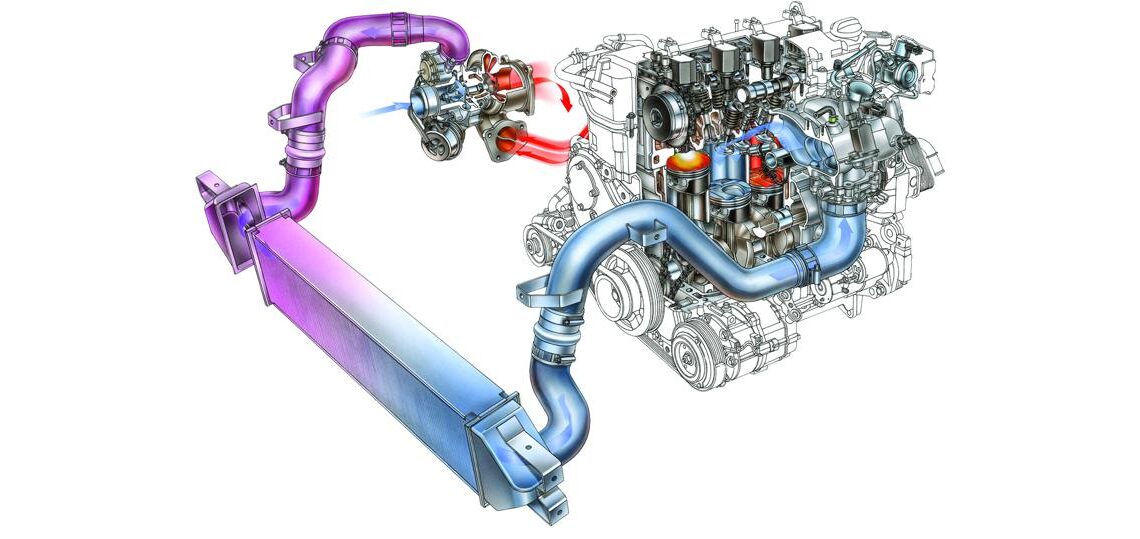The standard internal combustion engine’s operation is good, but it could be better. While the pistons’ intake strokes do draw air into the combustion chamber, that process is limited by the ambient air pressure.
Now if that intake charge could be fortified—say compressed so there’s more oxygen included—then the engine’s volumetric efficiency could be greatly improved. Increased volumetric efficiency equals increased engine output. That’s where the turbocharger comes in.
The turbocharger features a pair of turbine fans contained inside a housing. The fans are connected by an axial shaft. As the energy from the exhaust stream spins one fan, the other fan compresses the intake charge. This increases its air pressure and ultimately delivers more oxygen into the engine.
The result is often referred to as boost, the increase in pressure above normal atmospheric pressure—usually 14.7 psi. However, getting this system to work properly has taken some time and development, as several hurdles had to be overcome.
Intake Charge Heat:
While delivering a compressed intake charge helps performance, the actual compression process heats that same intake charge. Hot air doesn’t help performance.
A common solution has been the intercooler, a device that helps the compressed intake charge shed heat. However, fitting an intercooler to the intake stream can provide its own issues, like delayed throttle response, packaging issues and pressure drops.
Throttle Response:
The naturally aspirated engine’s intake system can be relatively simple. Look at a row of side-draft Webers, and it’s fairly easy to see how the intake charge has a straight shot right into the combustion chambers. The result is near-telepathic throttle response.
With a turbocharged engine, things aren’t always so instant. Between the compression process itself and the intake air’s trip through the intercooler, throttle response can be a bit laggy. On the street, this can be an inconvenience. On the track, a delay in the application of power can send a car off the track and into the weeds. Cures have included better turbocharger designs, improved…
Click Here to Read the Full Original Article at Grassroots Motorsports Online Articles…

